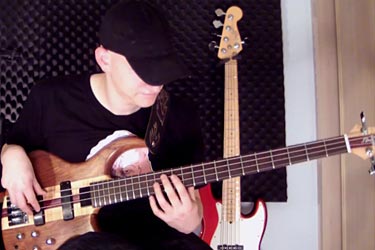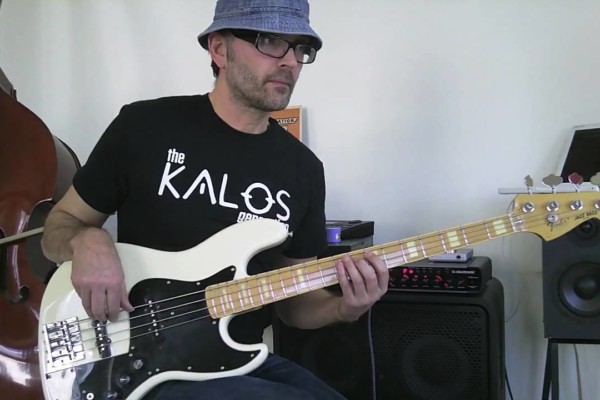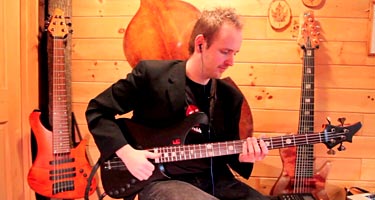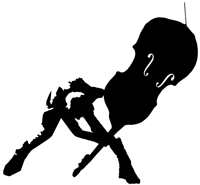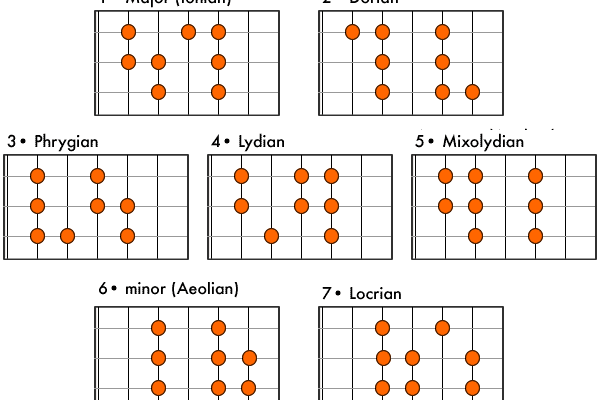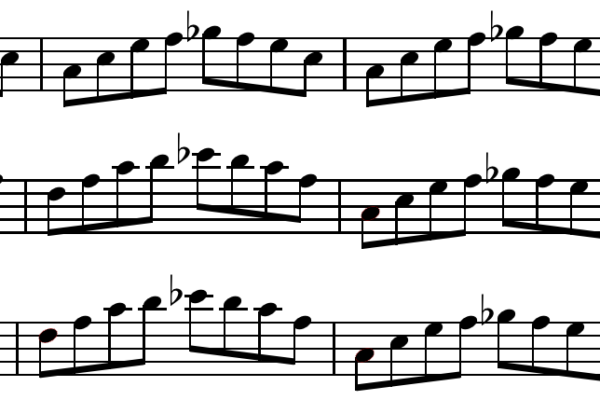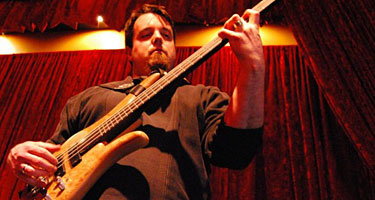Bass Lesson Archives - Page 12
Bass Lesson: Expand Your Fretboard with Major Triads
In this new lesson, we’ll break down the concepts of utilizing triads in expanding your fretboard knowledge and control. We’ll explore triad inversions, different fingerings and using triads as target notes to achieve this goal. The video starts with a demonstration of a solo over a G Major chord. I’m playing a G Major triad. A triad is of course...
Or Lubianiker: Interactive Bass Licks Video Lesson
Or Lubianiker (aka “Rule of Thump”) is on to something cool in the world of bass lessons. He’s posted his first experiment with interactive bass lessons on YouTube in which he plays simple licks in E minor and you choose how to mix and match them to create your own licks. Or provides links to each little lick and breaks...
Finger-Style Funk Bass Lesson: Build Dexterity and Accuracy in Your Playing
In this lesson we’re going to focus on a style known as finger-style funk (or “finger funk”), with the goal of developing both dexterity and accuracy in your playing. Finger-style funk is typically centered around the 16th note, and many of the notes are muted. You’ll notice in the notation for this lesson that those muted notes are indicated with...
Practical Theory: Improvising over a Minor Key Progression
In my last lesson, we covered the topic of improvising over a minor 7 chord. This time around, we’re going to focus on improvising over a minor key progression. For this lesson, we’ll use this progression: | Am7 | G7 | FMaj7 | FMaj7 Bm7b5 | For this particular progression, you can play the A minor Aeolian/A minor pentatonic scale,...
Practical Theory: Improvising over a Minor 7 Chord
Today, I’m kicking off a new Practical Theory lesson series, starting with an approach to improvising over a minor 7 chord. In the video below, I demonstrate a solo groove before describing the approach. In jazz, funk, and rock, if a solo section consists of a static minor 7 chord, most often the Dorian minor scale is used. The Dorian...
Double Thumb: A Lesson in Slap Bass
In this installment of our new bass lesson series, we’re focusing on a slap-based, percussive bass technique widely known as “Double Thumbing” or the “Victor [Wooten] style”. This technique involves an approach to slap where you hit the string with your thumb and follow through, landing on the next string. So the first note – an open E – would...
Basic Vibrato on the Upright Bass – A How To Guide
Many students have trouble mastering vibrato technically and understanding its usage musically. There are numerous debates regarding vibrato usage in musical contexts, so today we will focus on a simpler matter: how to achieve technical mastery of this skill. From an instrumental point of view, our goal is to have complete control over the width and speed of our vibrato,...
A Practical Guide to Modes and Scales
Q: What are modes and how do they work? A: I get this question a lot, but have only touched on it in past columns, as it relates to other questions. Here’s a straightforward guide to modes and scales to follow. Modes are a very simple concept but can take some time to really understand and get under your fingers...
Understanding Blues Forms and Common Substitutions
In this lesson, we’re going to examine a couple of different blues forms, specifically the 12 bar, 8 bar, and 16 bar blues. Additionally, we’ll go over a few different approaches to playing through the form and knowing when it would be appropriate to substitute chords or when to adhere to the traditional changes. Here is a diagram outlining the...
Working with Drones – Introduction: Improving Intonation
One of the best ways I know to increase one’s intonational precision is to play against a held drone note. It is excellent not only for left hand finger spacing, shifting, but also for improving one’s aural pitch discrimination. You can create your own drone note using a looper, midi program, etc. or your metronome or tuner may have the...
Technique Series: Pizzicato (Plucking) Exercises
The simple, straightforward exercises below are the best I have seen to develop and maintain right hand pizzicato (plucking) on the upright bass. They isolate the technique to focus one just one thing: your right hand technique. There is certainly room in a practice routine to work on right hand/left hand coordination, or tricky patterns, but these have proven to...
Fretboard Knowledge
Q: I have wanted to really get to know the fretboard inside out for a long time but have always struggled with visualizing a scale or the notes of a chord over the full range of my instrument. So I often find I’m playing in the same familiar patterns and am not really able to move freely over the fretboard....

